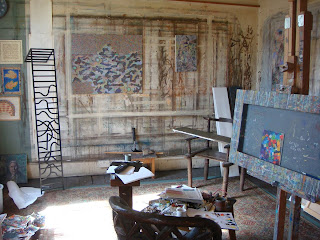Balls are not what they used to be. It is the old story: as soon as one starts looking at anything closely that one has hitherto taken for granted one finds a history of design shift and material alteration.
I have long been working on a sequence of tennis balls covered in my own hair to represent the seven ages of man, starting with black hair and ending with white. Both sorts are still present on my head though the ratio of one to the other is rapidly changing. Hair is also not what it used to be. When I started with hair-covered skulls over twenty years ago black predominated 5:1 but now the proportions have almost reversed with a ratio of white to black of 5:2. As I have discovered, there is no such things as grey hair. Pigmented and unpigmented hairs make the necessary mixture in pointillist fashion.
Long ago I found a ball in the garden, old and grey and bald, exactly like those I used to kick all the way to primary school and back. Their colour somehow matched both school flannels and the pavements along which I practised my dribbling technique. Once upon a time each had been white and furry when smashed by Seixas or lobbed by Drobny at Wimbledon, thereafter to be sold off to some superior lawn tennis club and later donated for use on the public asphalt of the Clapham Common courts before landing, hairless and exhausted, at my untalented feet.
This one in particular having knocked about the studio for a while caught my eye one day and gave me an idea about the passing of time it represented. Lines from Macbeth came to mind (Tomorrow and tomorrow etc...) with Wimbledon replacing 'yesterday'... and all our Wimbledons have lighted fools the way to dusty death.
I searched for other balls and found one which, being less bald than the first, Andy carefully shaved for me in preparation for its recladding with white hair.
It soon became apparent that with time the whole mode of their manufacture had changed. The beautiful Hogarthian curve of the characteristic seam which united the two segments had given way to a blander more perfunctory shape. The modern ball is in fact made of joined hemispheres with a rubber false seam acting as a purposeless line. The lurid yellow or fluorescent lime green of the current ball is a further (and ineradicable) sign of the times.
I decided to make a ball coated alternately in black and white hair to serve as an emblem of the yin/yang of sport and art. Although I exaggerated the curve of the false seam it did not give me quite enough of the famous sign. Now I can see how far I have to go in drawing my fake seam over that of the manufacturer (as seen below). I will try again even though it will condemn me to fifty Ghandi hours of sorting extra to what is needed for the remaining Ages of Man.
See also blog entry 5th February 2007 - Confessions of a tricophile.


























